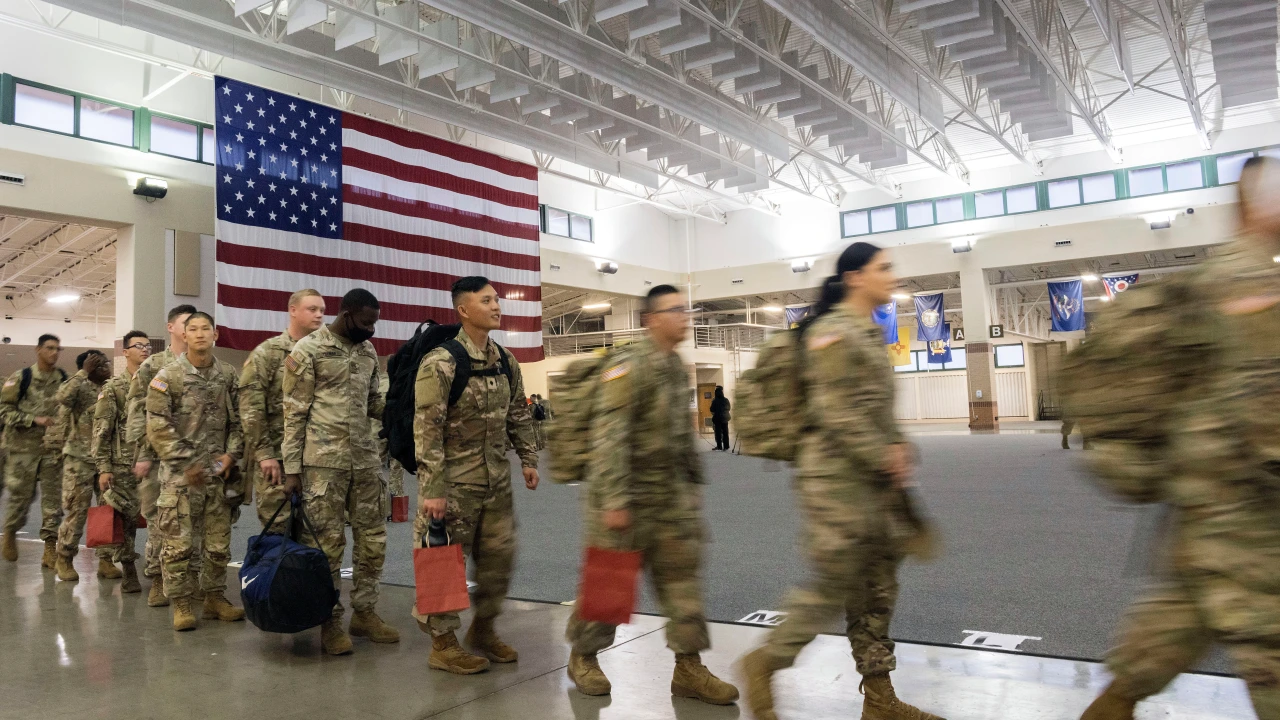In recent comments made at George Washington University, Christine Wormuth, the United States Secretary of the Army, affirmed that her leading priority in 2023 “is fixing our recruiting problem.” Acknowledging that the Army fell short of its recruiting goal in 2022 by 15,000 enlistees, which translates to a 25 percent shortfall, she nevertheless expressed confidence that such recruiting challenges could soon be overcome.
Secretary Wormuth’s comments take place as news outlet after news outlet reports diminishing enthusiasm on the part of American young people for serving in the military, as well as each branch’s efforts to respond to that waning zest for service.
Reasons for declining enlistment include diminished physical fitness among Americans between the ages of 17 and 24, with a recent Pentagon study determining that “77 percent of young Americans would not qualify for military service without a waiver due to being overweight, using drugs or having mental and physical health problems,” up from 71 percent in 2014.
Last June, Gallup found a record-low percentage of Americans reporting being “extremely proud to be American;” this was particularly pronounced among young people.
Others worry that military service, which typically includes four years of active duty and four years in the reserves, will leave them behind when it comes time to pursue a civilian career, while other would-be enlistees are concerned about politics finding their way into the military.
As has been widely reported, various measures are being implemented to boost enlistment numbers, from the Department of Defense deciding to allow 700 recruits diagnosed with attention-deficit hyperactivity disorder to enlist without a waiver in December of last year to the Army offering guaranteed promotions for soldiers who successfully encourage a friend to enlist to the Air Force relaxing its long-standing opposition to neck and hand tattoos.
In my view, one proposal more than any other might be the most effective in both increasing enlistment and, as a byproduct, beginning to remedy one of America’s most urgent pathologies: increasing apathy toward the nation and its institutions: encouraging more Americans to take advantage of the two-year enlistment options the Army has been increasingly offering and which hopefully other branches also will consider establishing.
Last February, the Army wisely began offering more short-term enlistment options, such as two years of active duty (followed by two years in the reserves) as opposed to the typical, longer commitment.
Shorter lengths of service have much historical and global precedent and often are found in nations where greater shares of the population serve in the military. For instance, prior to the end of the draft in 1973, enlistments were generally shorter than in the decades that followed (often 12 months in peacetime and 33 months, for instance, during World War II). By the mid-1990s, the average military service length for enlisted personnel reached a high of 7.5 years (as compared to 5.8 years in 1973), though it would later fall to 6.7 years by 2009. All the while, the share of Americans serving in the military has steadily declined.
Although I disagree with those — such as former Rep. Charlie Rangel (D-NY), commentator Michael Smerconish, and Director of the Domestic Policy Council Susan Rice — who have argued for either a reinstatement of the draft or establishing mandatory national service, there are lessons to be gleaned in terms of service length from countries that do have mandatory conscription. In Finland, for instance, military service runs typically less than one year. And, in South Korea, another nation with a bellicose neighbor, enlistments are usually 18-21 months. Clearly, even if enlistees are able to return to civilian life after a comparatively short time, they retain what they learned should their nation need them in a time of war or national crisis.
Coincidentally or not, these are also nations that have recently reported elevated trust in government.
Time obstinately remains the most precious of all commodities, and many American young people may reasonably balk at committing nearly a half a decade to active duty service, but two years may be eminently palatable. And, furthermore, as Sergeant Major of the Army Michael Grinston has observed, recruitment more than retention tends to be the problem, with many enlistees opting to extend their time once they actually experience military life.
As thinkers from Lance Morrow to former Sen. Ben Sasse warn of the growing number of young people seeming to withdraw from the responsibilities of adulthood, a sense increasingly confirmed by survey findings, perhaps giving the military a try would be worthwhile.
Not long ago, widespread participation in the military was the norm, with the concept of “the other 1 percent” being quite foreign and anything resembling above-the-fray-ism socially untenable. And, coincidentally or otherwise, as the aforementioned Gallup findings show clearly, that was also an era of many more Americans answering in the affirmative when queried as to if they were “extremely proud to be American.”
Consider benefits of shorter military enlis
tments




